Merhaba
Our hotel provided a huge breakfast buffet so you could really eat yourself silly. I got hooked on the muesli with thick village yogurt and some kind of nut syrup. And lots of tea. There were two other buffet tables with eggs and cheeses and vegetables and fruits, bread, rolls…and even some kind of soup! Lunch was usually some time past 1:30 so I was pretty hungry by the time we ate.
Ru
Kapadokya Day 1 Lunch and afternoon
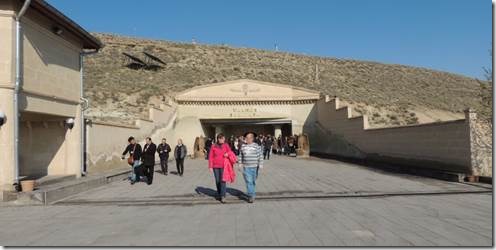
Uranos Hillside Restaurant |
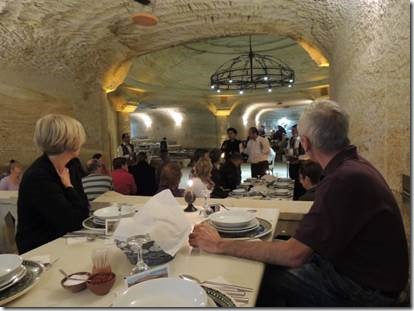
Sitting on stone pillow covered seats at stone tables.. |
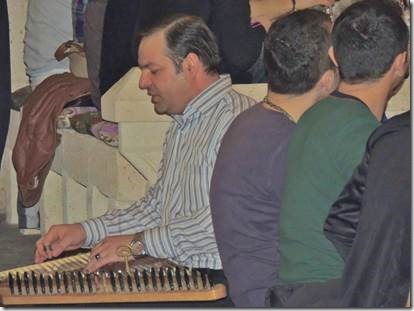
We were serenated by this musician and Turkish diners who knew the words to his songs. |
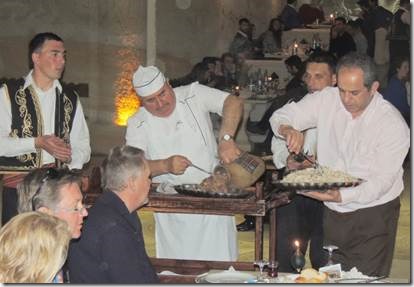
“the content of the pot which was slow cooked beef stew or testi kebab is an Anatolia dish served in Gὄreme. It’s essentially a large pot that is sealed in bread dough and put into an oven for an extended period of time.” http://anlinhsu-foodendine.blogspot.com/ We had some grilled eggplant and soup and then Randal and I opted for the grilled fish. At the end there was baklava! |
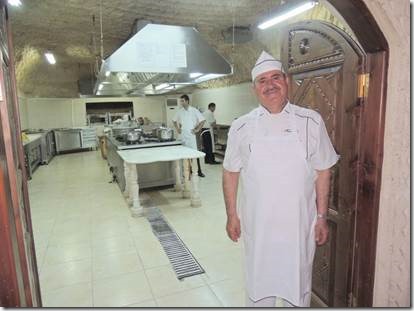
The proud chef |
| http://whc.unesco.org/en/list/357 is an very erudite explanation of the Cappadocia area with a photo gallery and video. There were certain places where we weren’t allowed to film in the caves to portect the wall frescos. It was a good place to walk off some of lunch. |
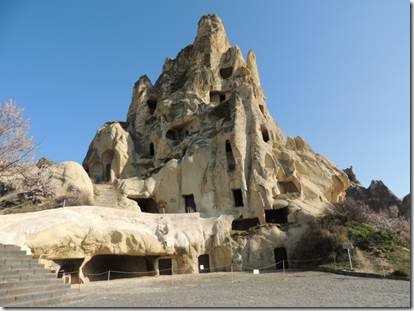
Open Air Museum with its rock churches. No photos were allowed inside the caves to protect the fragile wall frescos. Some caves we could take photos but without using the flash as the light is just enough to cause certain bacteria to activate and destroy the paintings. “Bacteria are abundant on and pose a serious threat to ancient rock and cave paintings. The microclimate in these caves cannot be regulated as well as it can be in museums, with the result being that art that has survived for thousands of years in sealed caves is being destroyed in a matter of years by invasive bacterial species. Cave art paintings have been genetically tested for bacteria and have been shown to host a variety of unknown bacteria, some of which could be potentially harmful to these ancient paintings, which use the paintings as substrates during growth, produce destructive metabolites, or simply cover the paintings. The results of these tests suggest that new preservation measures need to be taken to ensure the longevity of the paintings, whose environment has already been altered significantly by the presence of tourists, who introduced foreign microbial populations, and artificial lighting, which led to the growth of algae and colonization by bacteria.” |
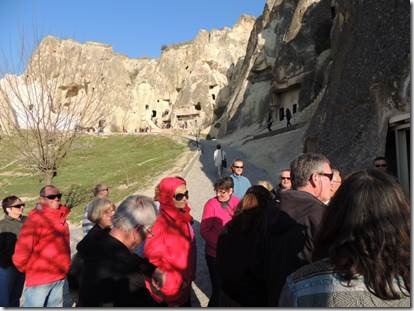 |
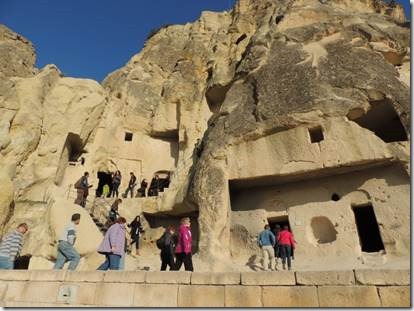 |
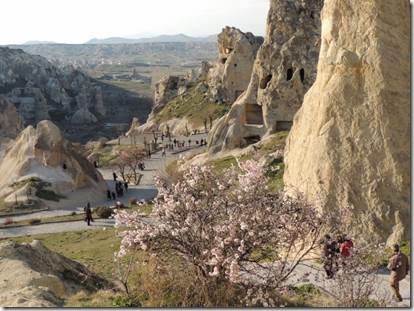 |
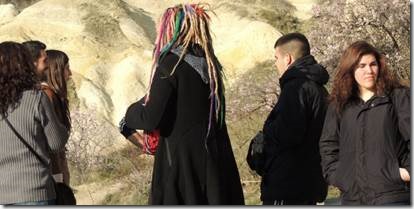
I was fascinated with her multi-colored dreadlocks. |
| Then it was on to a pottery demonstration. I took lots of photos so I’ll write about that next email. |
